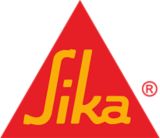
Sikaflex®-219 LM
High performance, low-modulus elastomeric polyurethane sealant
Sikaflex®-219 LM is a one-component, low-modulus polyurethane sealant. It adheres well to a wide variety of substrates and cures on exposure to atmospheric moisture. Sikaflex®-219 LM exhibits very good recovery and is ideal for sealing applications requiring high joint movement capability.
- Very good sag resistance
- Bonds well to a wide variety of substrates
- Good gap-filling properties
- High joint movement capability
- Can be painted and sanded
- Low odor

